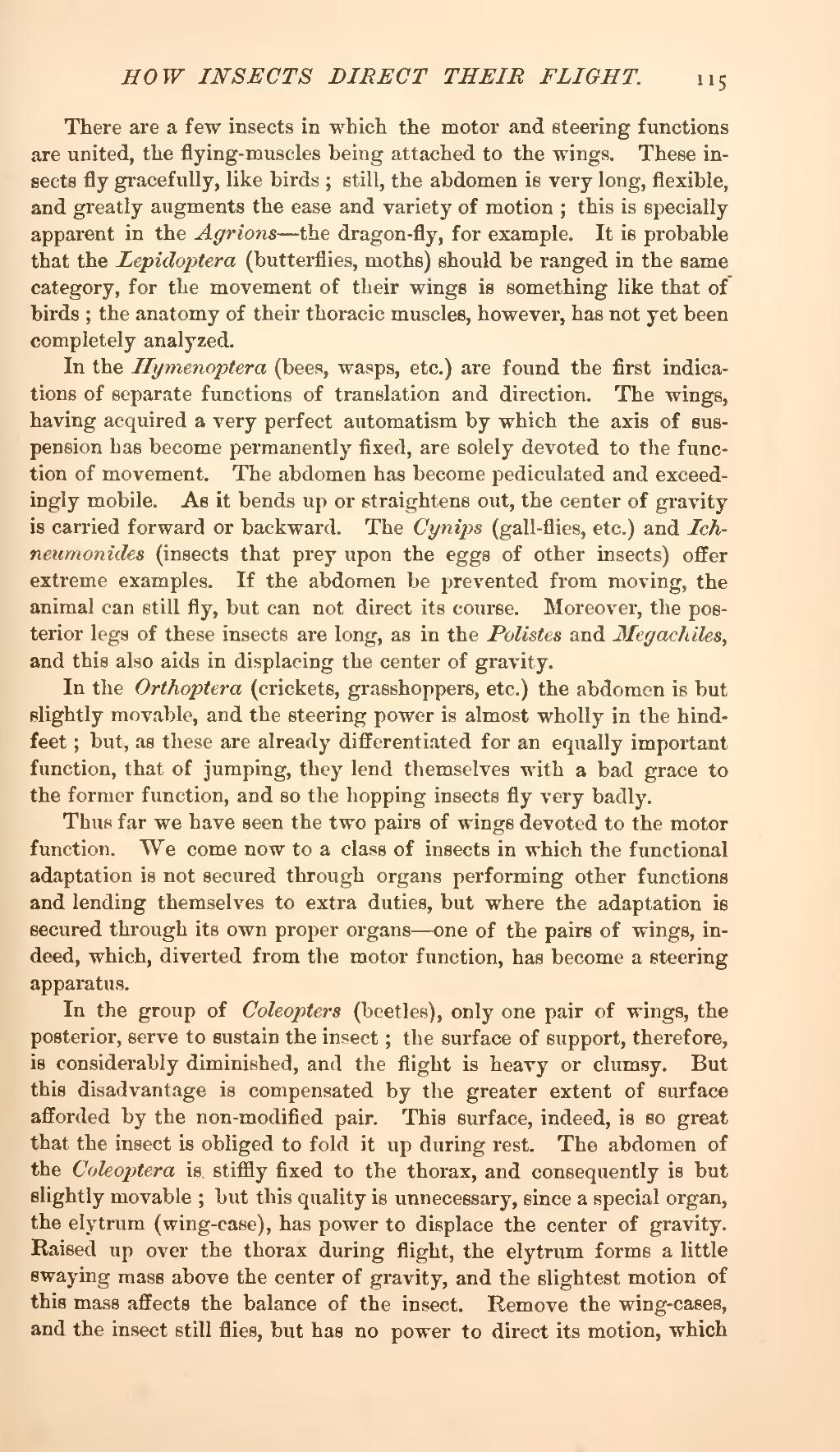There are a few insects in which the motor and steering functions are united, the flying-muscles being attached to the wings. These insects fly gracefully, like birds; still, the abdomen is very long, flexible, and greatly augments the ease and variety of motion; this is specially apparent in the Agrions—the dragon-fly, for example. It is probable that the Lepidoptera (butterflies, moths) should be ranged in the same category, for the movement of their wings is something like that of birds; the anatomy of their thoracic muscles, however, has not yet been completely analyzed.
In the Hymenoptera (bees, wasps, etc.) are found the first indications of separate functions of translation and direction. The wings, having acquired a very perfect automatism by which the axis of suspension has become permanently fixed, are solely devoted to the function of movement. The abdomen has become pediculated and exceedingly mobile. As it bends up or straightens out, the center of gravity is carried forward or backward. The Cynips (gall-flies, etc.) and Ichneumonides (insects that prey upon the eggs of other insects) offer extreme examples. If the abdomen be prevented from moving, the animal can still fly, but can not direct its course. Moreover, the posterior legs of these insects are long, as in the Polistes and Megachiles, and this also aids in displacing the center of gravity.
In the Orthoptera (crickets, grasshoppers, etc.) the abdomen is but slightly movable, and the steering power is almost wholly in the hindfeet; but, as these are already differentiated for an equally important function, that of jumping, they lend themselves with a bad grace to the former function, and so the hopping insects fly very badly.
Thus far we have seen the two pairs of wings devoted to the motor function. We come now to a class of insects in which the functional adaptation is not secured through organs performing other functions and lending themselves to extra duties, but where the adaptation is secured through its own proper organs—one of the pairs of wings, indeed, which, diverted from the motor function, has become a steering apparatus.
In the group of Coleopters (beetles), only one pair of wings, the posterior, serve to sustain the insect; the surface of support, therefore, is considerably diminished, and the flight is heavy or clumsy. But this disadvantage is compensated by the greater extent of surface afforded by the non-modified pair. This surface, indeed, is so great that the insect is obliged to fold it up during rest. The abdomen of the Coleoptera is stiffly fixed to the thorax, and consequently is but slightly movable; but this quality is unnecessary, since a special organ, the elytrum (wing-case), has power to displace the center of gravity. Raised up over the thorax during flight, the elytrum forms a little swaying mass above the center of gravity, and the slightest motion of this mass affects the balance of the insect. Remove the wing-cases, and the insect still flies, but has no power to direct its motion, which
